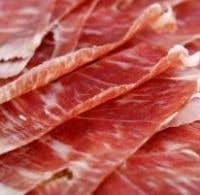This article was originally published in Business Life.
I can still remember where, when and why I walked into my first tapas bar.
It was one early Sunday evening in the spring of 1978 in the old town of Bilbao in northern Spain to which I had been sent by the directors of the company I then walked for to try and sort out an under-performing office.
In those days, Spanish cities used to close completely between lunch and early evening and this was the only area where there seemed even a hint of activity. I walked in and asked for a beer but with little Spanish and no Basque I was handed a glass of red wine (I now know that vino in Spanish is pronounced bino, hence the confusion) and spent the rest of the evening there watching, eating and drinking.
I fell in love with tapas at that moment. Primarily, of course, their appeal is their size, small plates or small dishes, that allow any enthusiastic eater to pick numerous different flavours: bowls of olives and almonds; plates of that delicious, succulent jamon serrano (wafer-thin ham); larger bowls stuffed with diced, grilled, spicy chorizo sausage; sizzling prawns with slices of pungent garlic; two of my particular favourites, the black rice with squid ink and the small round balls of morcilla, Spanish black pudding. And, most conveniently, these same dishes are just the perfect size for the desserts whether it is the creamy crema catalane, a less rich and particularly eggy crème caramel.
Three memories still haunt me from that evening. The first is just how tapas bars invariably represent such good value wherever they are. The second is how I stood in amazement watching the barman keep a tally of all of his customers managed to eat and drink without resorting to pen and paper (much easier, I now realize, if most of the dishes and the drinks are the same price). And the third is, why did I bother to open a much more upmarket restaurant in London in the 1980s when I should have gone out and opened a string of tapas bars?
Happily, there were others, primarily Spanish waiters and chefs who had come to work in the UK and then set up on their own, who kept the concept of tapas bars going in London. But over the past decade there has been a rapid spread of this style of eating and drinking across Europe and the US – a phenomenon, I am delighted to say, is bound to continue.
The major reason for this is that inexpensive travel took more and more people to Spain and in particular to Cal Pep, close to the seafront in Barcelona, a small but wonderful tapas bar that has now become mecca for many aspiring chefs. By not taking bookings; by serving excellent food very quickly; and, consequently, by turning on its head the normal restaurant business model of serving, fewer customers more slowly but at a higher price, tapas bars can make economic sense out of the smallest spaces.
Tim Johnston has done just that with Juveniles in the centre of Paris in a sliver of a ground floor with wine boxes piled high on either side. Monika Linton did this with her first branch of Tapas Brindisa by London Bridge (others are just opening in Soho and South Kensington) when she decided to make the brave step from being an importer of Spanish produce to being a restaurateur. And Sam and Eddie Hart have shown how, if you can serve this kind of appetizing food in the right location, you can establish a very successful business. Their counter at Barrafina on Frith Street, Soho, only seats 23 at one time but so popular has this place now become that they serve over 1,000 customers a week.
And in these days of responsible drinking, tapas bars serve one other distinctive role: call in at El Pirata, The Salt Yard or its newer sister operation Dehesa in central London early evening, and these places will be crowded with customers drinking while sharing one or more small tapas.
Now why didn’t I open one?
Jancis adds: A stunning special lunch at Salt Yard last weekend matching eight small courses to over a dozen delicious sherries reminds me that the tapas revolution may, I hope will, have a knock on effect on the image and sales of sherry. Do check out the related articles by clicking on the sherry tag below.

